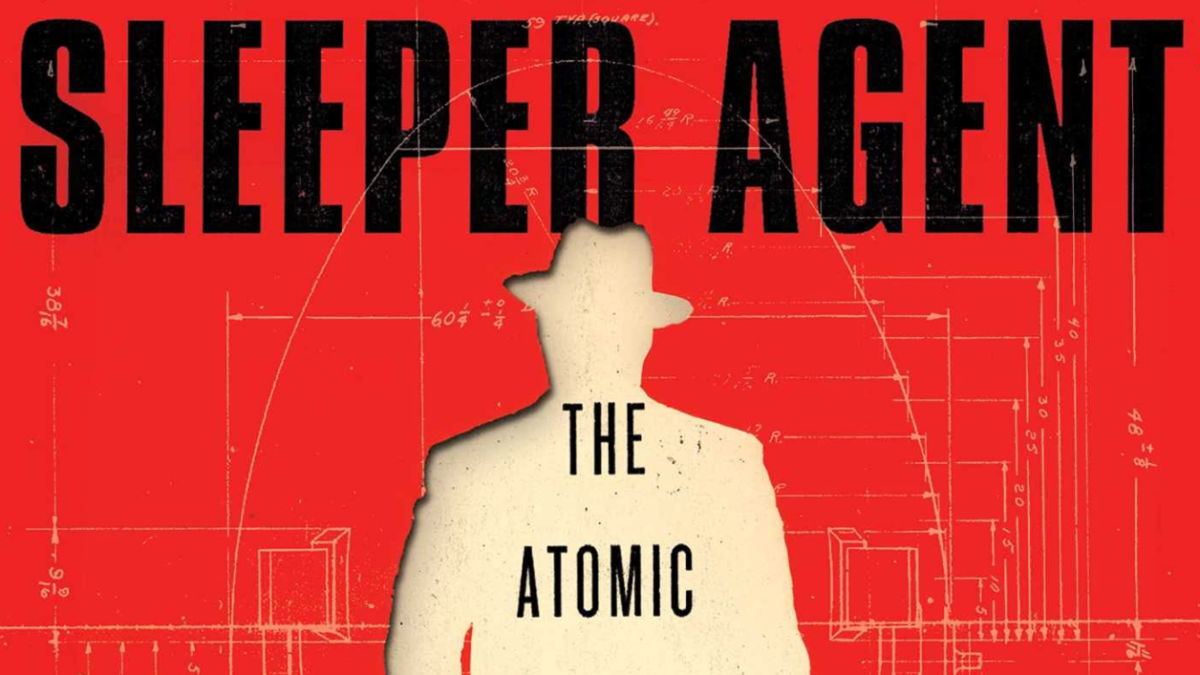“For an old spy and codebreaker like myself,” Malcolm Nance, the onetime National Security Agency cryptographer and current Brookings Scholar, once observed, “nothing in the world happens by coincidence.”
But when it came to George Koval, the Soviet sleeper spy carefully embedded into the Manhattan Project who, with his all-American background and scientific training, revealed key American nuclear secrets to his Moscow patrons, the U.S. national security establishment seemed all too willing to overlook as mere coincidences the unlikely concatenation of events leading to Koval’s betrayal.
In Sleeper Agent: The Atomic Spy in America Who Got Away, former Wall Street Journal reporter Ann Hagedorn’s captivating account of Koval’s infiltration, various possible explanations are floated for the glaring failure of American authorities to detect the plot: an extreme focus on the fascist enemy abroad at the expense of due attention to the communist menace at home; the urgent need for technical expertise in developing the bomb; and plain old incompetence. But it was Koval’s deep scientific knowledge, tradecraft, and clandestine skill as a highly trained agent that was truly distinguishing, shielding him from exposure until after his death.
The riveting tale begins and ends in Russia, where Hagedorn devotes appropriate space to exploring how the Koval family fell into the thrall of communism in the early 20th century, however unpalatable the movement appears to contemporary readers more than a century later.
Born and raised in the Russian Pale of Settlement, the only sector where Jews were permitted to reside but faced unceasing antisemitic attacks, Abram and Ethel Koval embraced socialist ideology early on by joining the Bund, or General Jewish Labor Union. In 1910, the Kovals fled the czarist pogroms for the friendlier climes of the United States, where they settled in Sioux City, Iowa.
At the time, the Midwest harbored tens of thousands of Klansmen across hundreds of Klaverns, and their influence combined with that of Henry Ford to render Jewish life in Sioux City rather difficult. Meanwhile in 1917, the Bolsheviks, from the Kovals’ perspective, “pledged to criminalize anti-Semitism and to allow Jews full participation in society.” (That they utterly failed, if they even truly tried, escapes Hagedorn’s scrutiny.)
Then, too, Abram and Ethel were “firm believers that capitalism could never eliminate poverty or oppression,” a sentiment that intensified during the Great Depression. Their son George, born in 1913, imbibed this philosophy at a young age, joining Iowa’s Young Communist League. To the Kovals, “post-czarist Russia was the hope of mankind, the solution to problems of injustice and inequality,” and in 1931 they decamped from the country that had given them safe haven, relocating to the newly-established Jewish Autonomous Region in the Soviet far southeast. Importantly, they departed on a family passport in Abram’s name, which meant George’s defection went unnoticed by the Department of State.
Unsurprisingly, life in the frigid, borderline uninhabitable region abutting the Chinese border proved intolerable for most residents, who simply left. George Koval showed scientific promise and gained admission to Moscow’s prestigious Mendeleev Institute, where he met Mila, the woman who would become his wife. His academic achievements attracted the attention of Soviet military intelligence, known as the GRU, and by 1939 he’d been recruited for the war effort.
Given his unique skills, midwestern American background, and unaccented English, Koval became an easy choice for reinsertion into the United States, where he returned in 1940 under the code name Delmar and the guidance of his New York-based handler Benjamin Lassen. Lassen established Raven Electric Co., a patriotic supplier to the War Department that served as a splendid espionage front. Raven employed Koval, even as he enrolled in chemistry coursework at Columbia University, where, careful to conceal his previous studies in Moscow, he rubbed elbows with the likes of Enrico Fermi and John Dunning.
After several years of working and studying, where he gained access to elite Columbia physicists and chemists, Koval entered the draft and, while at The Citadel, gained entry to the Army’s Specialized Training Program. From there, he was seconded to Site X, the codename for the Oak Ridge facility in Tennessee, where a massive team labored to isolate uranium-235 and plutonium-239. Koval gained top-secret clearance as a scientist within the Health Physics Department, and he periodically returned to New York to update Lassen on recent breakthroughs. “Everything that was happening in the sectors at Oak Ridge,” a GRU historian wrote, “was known to the Soviet side from Agent Delmar.”
By June 1945, Koval transferred to Dayton, Ohio, where he joined a secret project at Monsanto’s research lab to extract polonium from naturally-occurring bismuth and lead dioxide. The highly volatile polonium, discovered by Marie Curie, proved critical as a trigger initiating nuclear detonation. Koval remained at Dayton even after the war concluded at Hiroshima and Nagasaki, duly transmitting production details to his Soviet masters.
Soon thereafter, however, the walls began to close in around Koval, as FBI Director J. Edgar Hoover stepped up his anti-communist campaign and the House Unamerican Activities Committee intensified its zealous efforts to eradicate Soviet spies. With fascism soundly defeated, the United States turned its collective attention to Moscow, whose own espionage-fueled atomic program was racing ahead. Arthur Alexandrovich Adams (codename Achilles) and Clarence Hiskey (codename Ramsey), both of whom also reported to Lassen, were exposed as spies in the late 1940’s, and Koval, whose “timing was always nearly perfect,” fled to Moscow in late 1948.
Less than a year later, in the Kazakh steppe, the Soviets detonated their first atomic bomb. While perhaps not as significant as the revelations of Klaus Fuchs, Koval’s disclosures about the American nuclear program confirmed key details of the plutonium effort and revealed new ones about polonium production. “For the Soviets,” in Hagedorn’s telling, “this priceless information eliminated certain time-consuming and costly experiments that the Americans had conducted in their pursuit of the fuel used to initiate the chain reaction of the bombs.”
The GRU rewarded Koval’s loyalty with a tenured position at Mendeleev, his alma mater, and his notoriety even reached Aleksandr Solzhenitsyn, whose In the First Circle recounted the author’s transcription of a telephonic recording in which George Koval was identified as a Soviet spy stationed in the United States. And only years later would the FBI sniff his trail, ultimately abandoning the hunt once it became evident that Koval was safely beyond its reach. In 2006, he died in Moscow, at age 92, as Zhorzh Abramovich Koval, posthumously receiving the Hero of the Russian Federation gold medal, Russia’s highest civilian honor, from Vladimir Putin.
Hagedorn, whose extensive research shines through every page of this concise study, could perhaps have devoted more time to exploring how Koval so cleverly eluded detection and what lessons we might draw for the future of espionage.
Nevertheless, she quotes historians and colleagues of Koval who consistently described him as a “sleeper agent,” “a professional officer,” and “a penetration agent” who “played baseball,” “didn’t have a Russian accent,” and whose “credentials were perfect.”
Couple these skills to Koval’s deep-seated socialist ideology and the unwillingness of American authorities to aggressively target communists during World War II, and, in some ways, Koval’s success appears to have been overdetermined. And while the FBI and CIA have mostly kept their own counsel about Koval’s infiltration, one can only assume—or at least hope—that they’ve learned their lessons.









